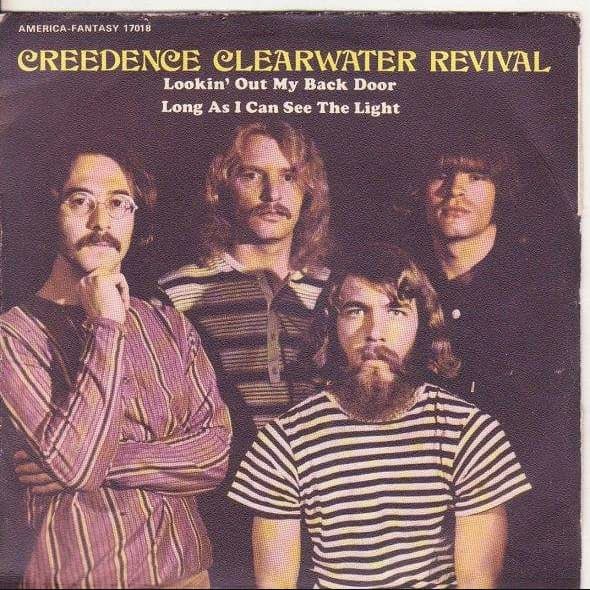
“Long As I Can See the Light” – Creedence Clearwater Revival’s Beacon of Hope
Released in 1970 as part of their critically acclaimed album Cosmo’s Factory, Creedence Clearwater Revival’s song “Long As I Can See the Light” stands out as one of their most poignant and introspective tracks. Despite being released as the flip side to the more upbeat “Lookin’ Out My Back Door” in the US, the song charted respectably, reaching number 57 on the Cash Box singles chart. In the UK, where it was featured as the A-side, it climbed to number 20, and it even reached number one in Norway. This duality of its release reflected the song’s powerful resonance across different audiences.
Musically, “Long As I Can See the Light” showcases a side of Creedence Clearwater Revival that many casual listeners might not associate with the band. Known primarily for their swampy, Southern rock sound with hits like “Proud Mary” and “Bad Moon Rising”, this track shifts the tone to a slower, more reflective ballad with deep blues influences. John Fogerty‘s soulful vocals carry the weight of the song, as he sings about the universal longing for comfort, home, and understanding. Cash Box magazine aptly described the track as a “slower paced ballad from the blues school,” contrasting it with the livelier flip side, while Billboard highlighted its “funky blues” essence.
Lyrically, Fogerty taps into themes of spiritual and emotional guidance, using the metaphor of light as a symbol of hope and direction. As biographer Thomas M. Kitts noted, the song could be interpreted as depicting a “world-weary figure” embarking on a journey filled with uncertainty, but with faith that he’ll find his way as long as he can see the light. The duality of the word “light” in the song—both a spiritual beacon and a symbol of love—is what gives the track its layered depth. It’s not just a song about wandering; it’s about the assurance of being able to return, even if the path ahead is unclear.
Interestingly, Fogerty himself admitted surprise at his use of a candle as a metaphor for the light that guides the singer home, noting that the song captured the “loner” inside him, yearning to feel understood. It’s this raw vulnerability that makes “Long As I Can See the Light” so relatable to listeners, particularly those who have spent time away from home or those longing for a sense of belonging.
Over time, the song has become a staple in Fogerty‘s solo performances and appears on several Creedence Clearwater Revival compilation albums, including The Best of Creedence Clearwater Revival and Chronicle: The 20 Greatest Hits. It has also earned admiration from fellow musicians, with Slipknot‘s Corey Taylor remarking that it’s “a really sombre piece” that evokes a deep sense of homesickness, particularly for those who spend much of their lives on the road.
“Long As I Can See the Light” may not have achieved the same immediate commercial success as some of the band’s other hits, but its emotional depth and universal themes have ensured its lasting impact. Decades after its release, it continues to resonate with listeners, offering a sense of solace and hope in times of uncertainty.